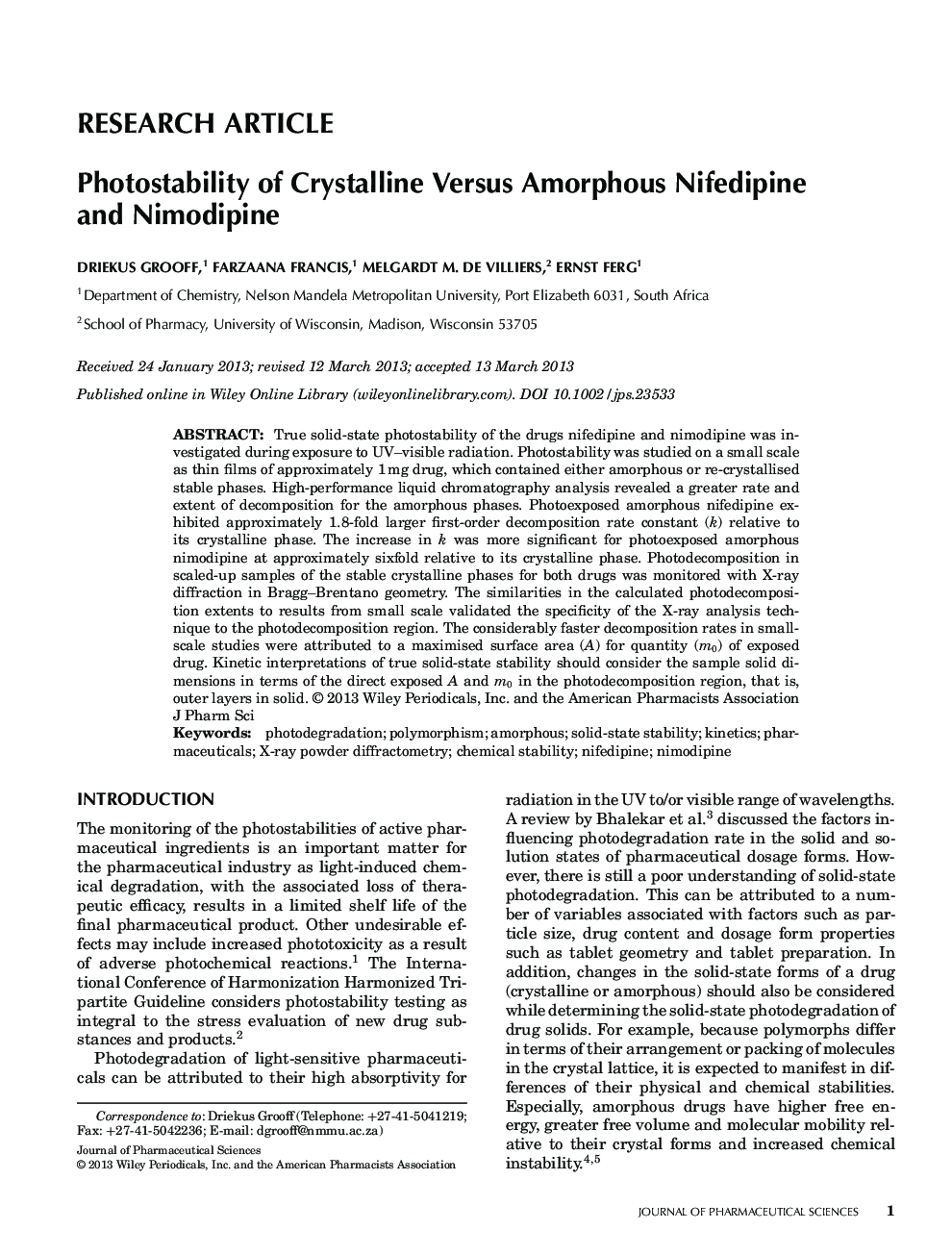| Article ID | Journal | Published Year | Pages | File Type |
|---|---|---|---|---|
| 2484984 | Journal of Pharmaceutical Sciences | 2013 | 12 Pages |
Abstract
True solid-state photostability of the drugs nifedipine and nimodipine was investigated during exposure to UV-visible radiation. Photostability was studied on a small scale as thin films of approximately 1Â mg drug, which contained either amorphous or re-crystallised stable phases. High-performance liquid chromatography analysis revealed a greater rate and extent of decomposition for the amorphous phases. Photoexposed amorphous nifedipine exhibited approximately 1.8-fold larger first-order decomposition rate constant (k) relative to its crystalline phase. The increase in k was more significant for photoexposed amorphous nimodipine at approximately sixfold relative to its crystalline phase. Photodecomposition in scaled-up samples of the stable crystalline phases for both drugs was monitored with X-ray diffraction in Bragg-Brentano geometry. The similarities in the calculated photodecomposition extents to results from small scale validated the specificity of the X-ray analysis technique to the photodecomposition region. The considerably faster decomposition rates in small-scale studies were attributed to a maximised surface area (A) for quantity (m0) of exposed drug. Kinetic interpretations of true solid-state stability should consider the sample solid dimensions in terms of the direct exposed A and m0 in the photodecomposition region, that is, outer layers in solid.
Keywords
Related Topics
Health Sciences
Pharmacology, Toxicology and Pharmaceutical Science
Drug Discovery
Authors
Driekus Grooff, Farzaana Francis, Melgardt M. De Villiers, Ernst Ferg,
